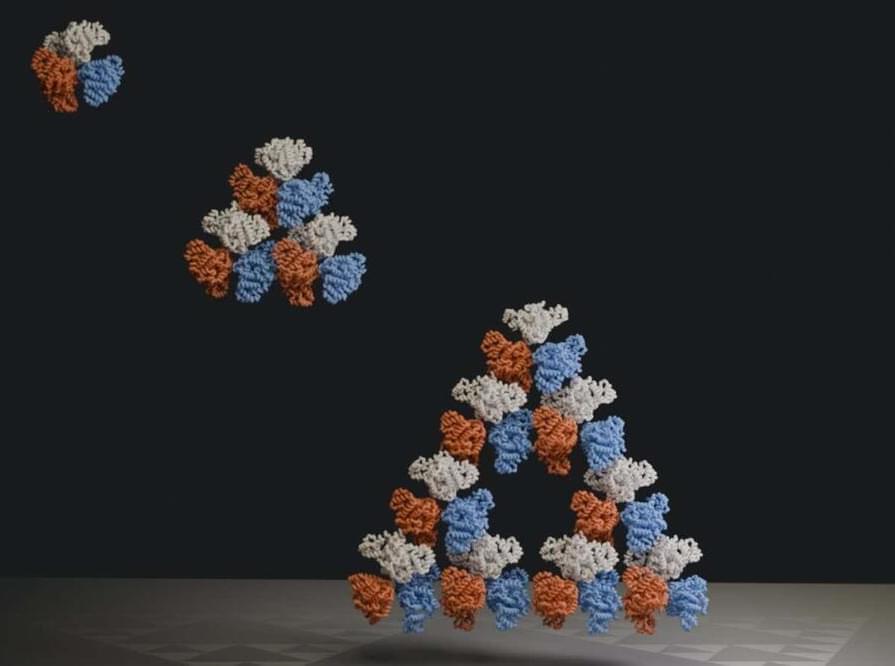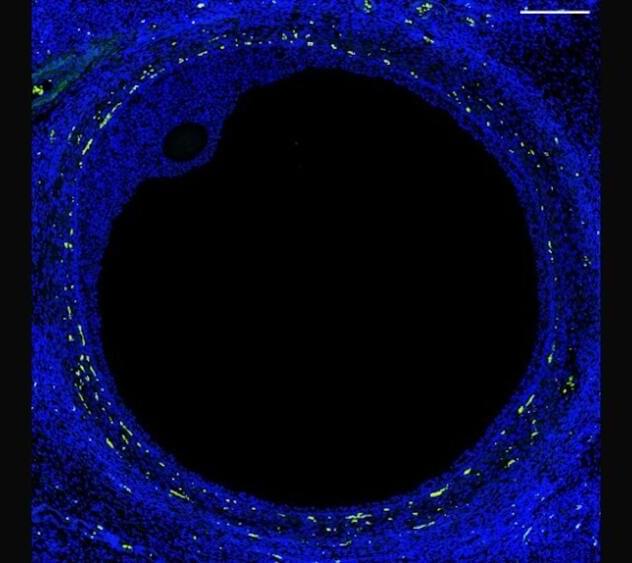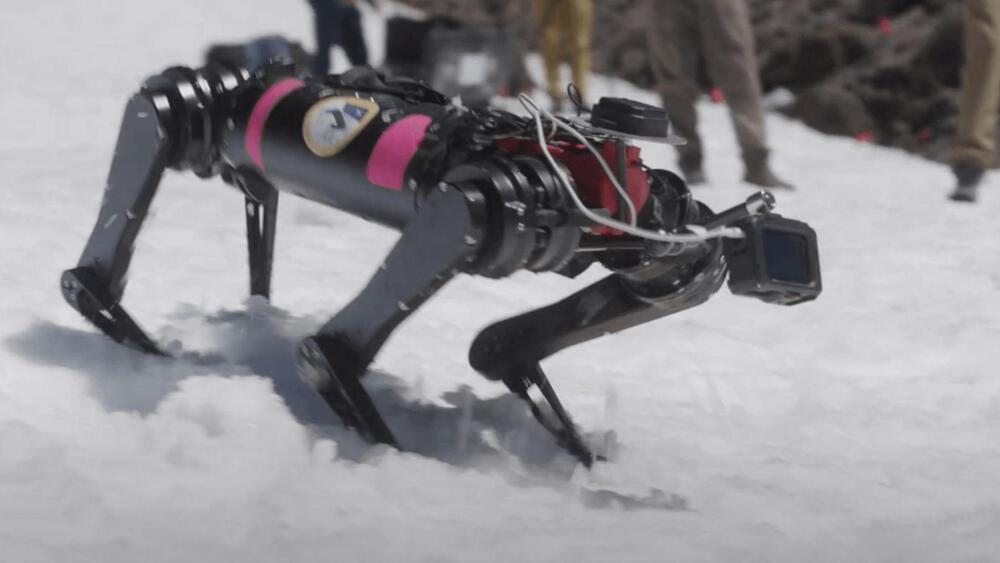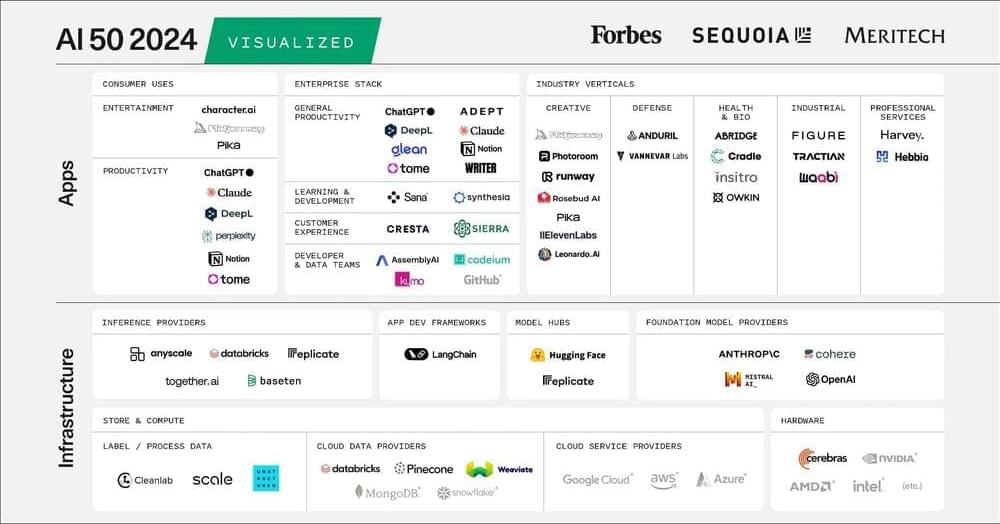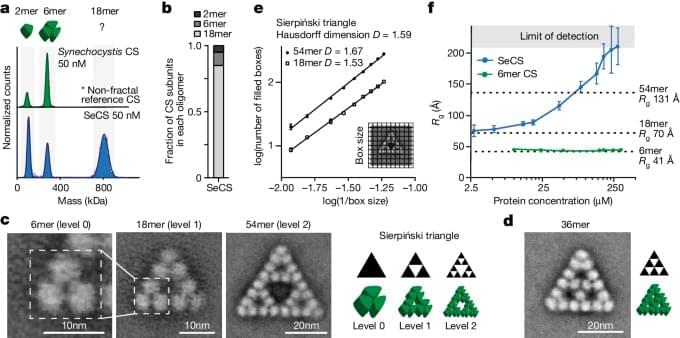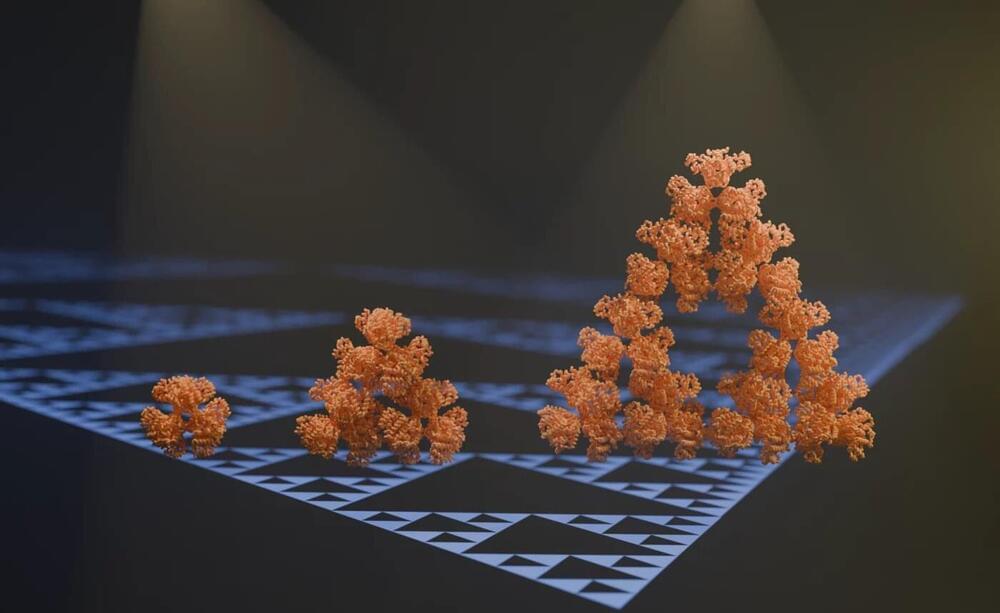
An international team of researchers led by groups from the Max Planck Institute in Marburg and Phillips University in Marburg has now discovered the first regular molecular fractal in nature. They discovered a microbial enzyme—citrate synthase from a cyanobacterium—that spontaneously assembles into a regular fractal pattern known as the Sierpiński triangle. This is an infinitely repeating series of triangles made up of smaller triangles.
“We stumbled on this structure completely by accident and almost couldn’t believe what we saw when we first took images of it using an electron microscope,” says first author Franziska Sendker.
“The protein makes these beautiful triangles and as the fractal grows, we see these larger and larger triangular voids in the middle of them, which is totally unlike any protein assembly we’ve ever seen before,” she continues.
